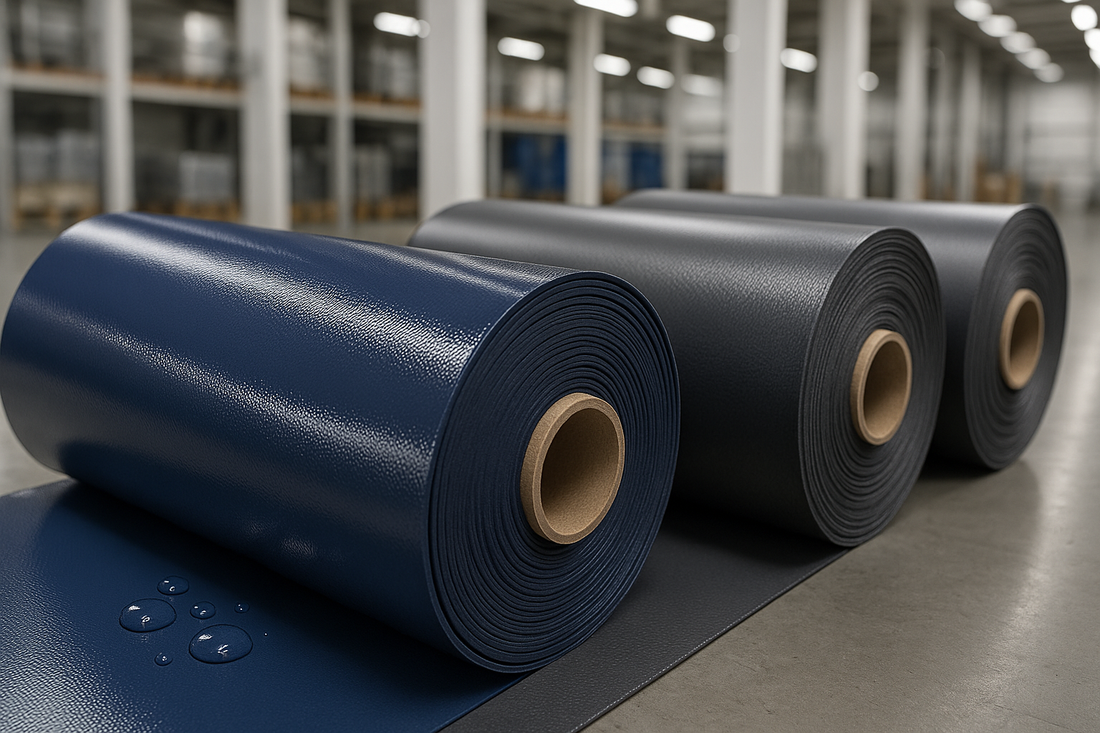
PVC vs PVC-Free Fabrics: Health and Environmental Insights
Share
For decades, PVC-coated fabrics have been the backbone of industrial and architectural applications. Their strength, cost-effectiveness, and versatility make them indispensable in fields such as membrane structures, tarpaulins, awnings, and transportation covers. At the same time, growing awareness of PVC’s health and environmental risks has encouraged the industry to explore PVC-free alternatives like TPO and other recyclable fabrics.
At uctextile, we provide both high-performance PVC fabrics and next-generation PVC-free solutions, ensuring our customers can select the right material for their needs.
1. The Health & Environmental Risks of PVC
PVC (polyvinyl chloride) remains one of the most widely used plastics in coated fabrics. However, concerns are rising due to:
- Plasticizers (phthalates): Added to soften PVC, but linked to potential endocrine disruption and reproductive health issues.
- Chlorine chemistry: PVC’s chlorine content means toxic byproducts (e.g., dioxins) can form during production or incineration.
- Disposal challenges: PVC does not biodegrade and incineration can release hydrochloric acid and other harmful compounds.
These concerns do not erase PVC’s value, but they highlight the need for responsible use, proper handling, and consideration of alternatives where sustainability is a priority.
2. Why PVC Remains Important
Despite its challenges, PVC fabric is still a leading choice in many industries because it offers:
- Excellent durability for outdoor and industrial use
- Strong weather resistance against UV, rain, and wind
- Cost efficiency compared to many alternatives
- Wide availability in different weights, colors, and finishes
For projects that prioritize heavy-duty performance and cost balance, PVC remains a practical and effective material.
3. The Rise of PVC-Free Fabrics
To meet stricter environmental standards and consumer demand, PVC-free fabrics such as TPO (Thermoplastic Polyolefin) and PU-coated textiles are becoming more popular. These alternatives provide:
- No toxic plasticizers → safer for human health
- Recyclability → reduced environmental footprint
- Lightweight construction → easier handling and transport
- Compliance with sustainability standards → attractive for green building projects
PVC-free solutions are especially relevant for industries that emphasize eco-friendly certifications and corporate sustainability goals.
4. How uctextile Supports Both Needs
At uctextile, we understand that every project has different priorities. That is why we offer:
- Premium PVC fabrics → for cost-effective, heavy-duty, long-lasting applications
- Advanced PVC-free options (TPO coated fabrics) → for projects where sustainability and recyclability are essential
By providing both, we give our customers the flexibility to choose what works best — whether the focus is performance, budget, or environmental responsibility.
Conclusion
The discussion around PVC is not about replacing it overnight, but about making informed choices. PVC fabrics continue to serve industries worldwide with strength and reliability, while PVC-free fabrics are paving the way for a greener future.
At uctextile, our mission is to deliver the right fabric for every project — balancing performance, cost, and sustainability.
👉 Explore both our PVC fabric and PVC-free fabric solutions at uctextile.com and discover how we can support your next project.
